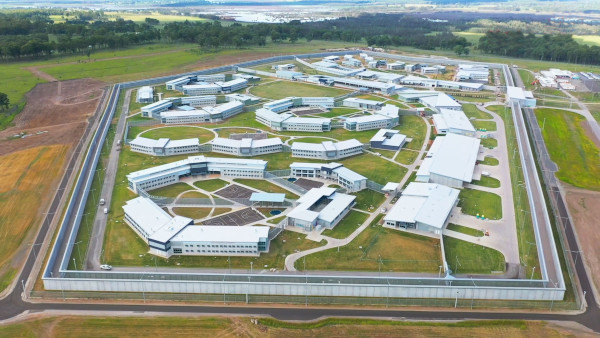It is not well known that when people are incarcerated in Australia, they lose access to Medicare cover and Centrelink payments. In NSW their healthcare is then managed by the NSW Justice Health and Forensic Mental Health Network (JHFMHN). This is a similar situation to what happens when a person presents to a public hospital as a public patient for treatment. They are then covered for health needs by NSW Health not Medicare.
For prisoners this seems like punishment over and above the judicial system, which results in further disadvantage for prisoners after release. This particularly applies to Aboriginal people who are disproportionately represented in our prison system. It requires reconnection with Medicare and Centrelink on return to their community.
A comparison can be made between jails and the hospital system because the prevalence of chronic disease is significant in both. In jail the chances an inmate has had significant past complex trauma is high. That means they are highly likely to suffer from the sequelae of post-traumatic stress. This in turn can result in chronic issues such as mental health problems, domestic violence, and drug and alcohol dependence, as well as musculoskeletal pain due to past physical and psychological trauma such as accidents or violence.
Some of this trauma may date back to their childhood or later in life and it often leads to chronic disease. Often this is transgenerational trauma. The health needs of inmates are therefore high and doctors and other health professionals are challenged to deal with the complexity of these issues.
When one looks at the health needs in the newest and largest jail in Australia the resources needed are huge. This facility, the Clarence Correctional Centre (CCC) near Grafton, opened in July 2020 and is working towards a capacity of 1700 beds. It is run by Serco, the well-known international private company with experience in this field.
When visiting this facility, I was impressed with the infrastructure, including the emergency department, and met with the lead health staff. Recruitment of GPs has been a difficult issue, reflecting the situation in Grafton itself. Ideally, the jail needs two full time GPs as well as the lead doctor, currently an addiction specialist, which seems appropriate. There is also a need for telehealth specialists back up.
Whatever the jail ownership or management, public or private, the biggest issue for GPs in the community is to receive proper handover of medical care. It could be likened to the handover of medical care that occurs from a public hospital to a GP on discharge. The best outcomes for patients are when a comprehensive health summary of treatment is sent to the GP for the ongoing health care of the patient post discharge.
This process with public hospitals has improved over the years, driven largely by modern technology plus dedicated doctors in state hospitals communicating with GPs. Ideally this should happen whenever an inmate is released back to their community and then connects with a GP at an Aboriginal Medical Centre or mainstream general practice. This would not only be helpful for individuals but may lead to overall lower recidivism rates.
However, to achieve this will come at a cost – but doesn’t everything! This needs to be weighed up against the potential of money saved by reduced reoffending and better follow up health care in the community. It costs $292 per day to imprison someone, so reducing recidivism rates is an important goal. Serco receives financial incentives to reduce recidivism at the CCC.
What is needed is funding for release-from-prison planning and communication systems to allow proper handover of clinical records so that lifestyle and health matters are addressed. Housing and employment are examples of future issues to address. Then there are complex health care needs that require follow up in the communities where released inmates end up. General practice is well placed to address these needs and make appropriate referrals for ongoing care.
On a positive note, the JHFMHM is working with health IT vendor Orion Health to develop a better communication system - the so-called Justice Health Electronic Health System. The current system is greatly outdated and paper driven. This new system, due for launching in November 2021, is eagerly awaited. It appears to have significant prospects to deliver better communication with GPs. One certainly hopes this will be the case.
Health IT vendor Orion Health has signed a contract with NSW’s Justice Health and Forensic Mental Health Network (JHFMHN) to roll out Orion Health’s medication management and electronic medicines administration (eMAR) solution. See article. (Paywall)





